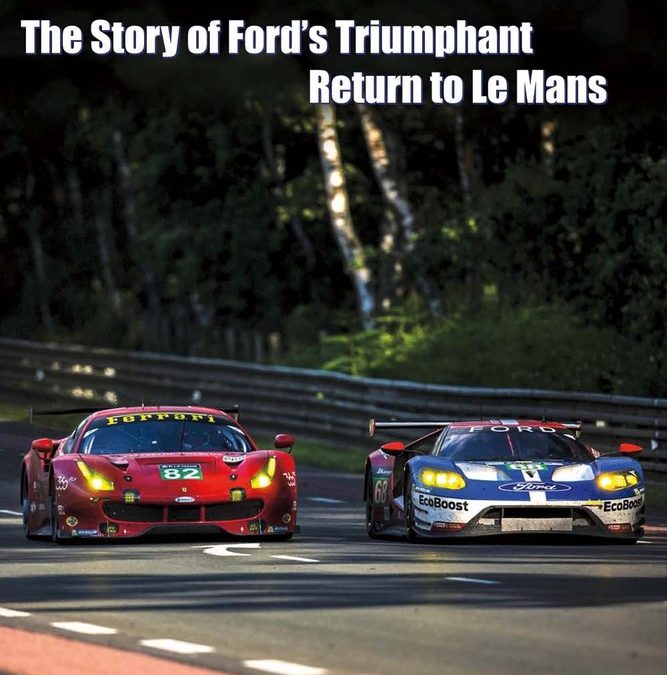
“A Big Ask” is the inside story of the Ford Motor Company’s return to the world’s most famous sports car race – The 24 Hours of Le Mans – as told by veteran motorsports journalist David Phillips and accompanied by more than 100 color images by some of the world’s leading racing photographers. Half a century ago, Ford’s battles with Ferrari for supremacy at Le Mans became the stuff of legends. Rebuffed in his bid to buy Ferrari, Henry Ford II spent untold millions to defeat the iconic Italian marque in a race it had come to dominate in the early 1960s. After two years of humiliating failure, the Ford GT40 delivered a storied 1-2-3 finish at Le Mans in 1966, the first of four straight wins for the American automaker. Ford returned to Le Mans in 2016 with a 21st century Ford GT and a bold mission: Celebrate the golden anniversary of its legendary 1-2-3 finish in 1966 with another victory. But Ford did not go it alone. Boasting a driver line-up of “Le Mans Assassins,” Ford partnered with powerful Chip Ganassi Racing, winners of the Indianapolis 500, 24 Hours of Daytona and Daytona 500, world-renowned Multimatic Engineering, and a host of world-class suppliers in an effort to win the 24 Hours of Le Mans. Veteran motorsports journalist David Phillips was embedded with Ford Chip Ganassi Racing throughout what proved to be an exhausting and exhilarating journey, from the development of the Ford GT and its problematic competition debut through to its first successes and, finally, triumphant performances at Le Mans and beyond. With unfettered access to all of the key players at Ford, Chip Ganassi Racing and Multimatic, he provides a detailed, insightful and compelling account of Ford Chip Ganassi Racing’s audacious bid to win the 24 Hours of Le Mans that will be a welcome addition to the collection of any motorsports aficianado, automotive buff or sports fan.

In the best-selling original book, Hot Rod Gallery: A Nostalgic Look at Hot Rodding’s Golden Years: 1930-1960, author and historian Pat Ganahl opened his archives and shared 192 pages and 350 photos of “some” of the most interesting and best photos of his collection. Filled with fascinating images of some of the coolest cars and builders, long-forgotten car clubs, and great shots of the dry lakes, nostalgia fans flocked to grab a piece of hot rodding history all in one convenient package. Well, if some is good, more is better, right?”
In Hot Rod Gallery II: More Great Photos and Stories from Hot Rodding’s Golden Years, Ganahl dug deeper into his massive archive for even cooler and more never-before-seen photos in both color and black and white to provide another album of great hot rodding photos. He was pleasantly surprised to find that he had more great stuff in old files and folders, hidden away for decades. In this edition are even more dry lakes shots, post-war rods, lead sleds, show circuit cars, and a chapter on marvelous mills. He even dug a little deeper into the early 1960s.
If you liked the first edition of Hot Rod Gallery by Pat Ganahl: A Nostalgic Look at Hot Rodding’s Golden Years: 1930-1960, you may like this one even more. Ganahl guarantees that it is filled with images you have never seen, and he offers his commentary and a lifetime of expertise in this selection of fantastic images from his expansive archive. You can spend hours looking at all the details and soaking in the history in these images, and we know you’ll enjoy this book as much as you did the first.

The Mitsubishi Zero is one of the great legendary fighter aircraft ever to have graced the skies. Symbolic of the might of Imperial Japan, she represented a peak of developmental prowess in the field of aviation during the early years of the Second World War. Engineered with maneuverability in mind, this lightweight, stripped-back aircraft had a performance that left her opponents totally outclassed. The dogfights she engaged in with the Chinese, British, Dutch and American warplanes in the 1941-42 period are the stuff of aviation legend. The Zero fighter had four major assets – agility, long-range, experienced and war-blooded pilots and, most importantly of all, a total inability of the Allies, particularly in the Pacific Theater of operations, to believe that Japan could produce such a machine. Despite a whole series of eyewitness reports from China, where she had swept the skies clean of all opposition, western minds were closed, and remained so until the brutal facts imposed themselves on their biased mindsets. All aircraft designs are a compromise of course, and the Zero had faults as well as strengths, two of which were to finally doom her; one was her lack of armor protection and the other was the inability of the Japanese to match the overwhelming production strength and innovation of Allied aircraft construction. Even so, she remained a potent threat until the end of the war, not least in her final role, that of a Kamikaze aircraft, in which she created as much havoc on the sea as she had done earlier in the air.
Peter C. Smith takes the reader on a journey from inspired inception to the blazing termination of this unique aircraft, the first Naval fighter to be superior to land-based aircraft. It describes in detail the many victories that punctuated the early days of its operational career as well as the desperate dying days of the Second World War which witnessed her final demise. Smith also lists the preserved Zero aircraft on display today. This is a fast-paced and fascinating history of a fighter aircraft like no other.

Choppers dont have to cost thirty thousand dollars. In fact, a chopper built at home can be had for as little as five thousand dollars. The key is the use of a donor bike for most of the components. How to Build a Cheap Chopper documents the construction of four inexpensive choppers with complete start-to-finish photo sequences. Least expensive is the metric chopper, based on a 1970s vintage Japanese four-cylinder engine and transmission installed in a hardtail frame. Dont look for billet accessories or a fancy candy paint job on this one.
Next up, price wise, are two bikes built using Buell/Sportster drivetrains. The fact is, a complete used Buell or Sportster can be had for five thou or less. Now youve got more than an engine you have wheels and tires, brakes, hardware, lights, harness, and some sheet metal. Bolt all that stuff to a simple hardtail frame to create an almost-instant chopper. Most lavish, but still cheap by comparison with many of the bikes built today, is a big twin chopper built from carefully chosen aftermarket parts. A RevTech engine and five-speed tranny set in a Rolling Thunder frame. Accessorize from the swap meet and add a simple one-color paint job to create a bike no one needs to be ashamed of.

“Antique Auto Body Leather Work for the Restorer,” by Herbert J. Butler. Find out how to restore or recreate your early auto interior. This guide reproduces period sources that show you how reupholster seats, doors, headliners, and interior trim. You will learn about the materials & tools used in the art and craft of motor trimming: motor hides, Morocco leather, imitation leather, combined leather and lining material, cloth, canvas, carpets, coach laces, stuffing materials, cushion springs, trimmers’ tools, and tufting machines. Find out the specifics of making seat cushions: the amount of fullness, the cushion pad, making the cushion borders, cushion with wood frame foundations, cushion without borders, plain trimming, the front roll, backs, side quarters, side and backs in one. You will also learn about other interior upholstery: door trimming, doors of closed bodies, front lining boards, headlining leathers, and metal beading. You can use the scaled layouts (with descriptions and instructions) for typical body types to recreate authentic leather trim for your restoration: limousine in hand-buffed leather, coach, depot wagon, landaulet, Electric Opera Bus, Brougham, Full Leather Phaeton, Limousine in Bedford Cord, Electric Brougham, the High-Wheeler, Limousine in Cloth, Runabout Roadster, and the Electric Stanhope Phaeton. You will also learn about cutting curtains, filling cushions, spring construction, and ventilating cushions. This book faithfully reproduces trim data originally appearing between 1905 and 1908 in rare American trade publications, together with relevant British material from 1924. Includes introductory text from “Motor Body Work” by Herbert J. Butler. The publisher states that “for mastery, this practically lost art requires no more than common sense, coupled with qualified instruction. 127 pages, softbound. Year Application – General.
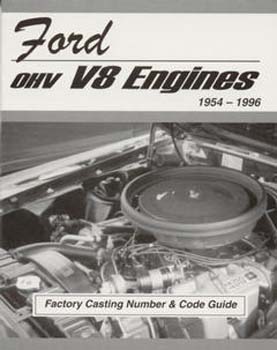
This is the low-down you’re looking for on all those Ford Overhead Valve V8 engines. Know your stuff and get it right the first time. Knowledge is power – buying or selling! Take it with you to the swap meets. Its handy pocket-size makes it easy to take along whenever you’re looking for or dealing in parts.
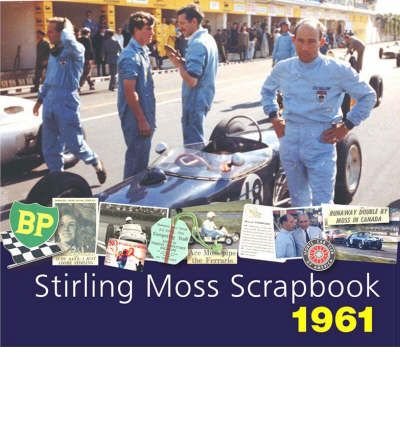
Stirling Moss is an icon. Even just the words ‘Stirling Moss’ conjure up an immediate picture – an image of speed, excitement, daring, jet-setting and beautiful women. By 1961 he was at the height of his remarkable career. He was unquestionably the finest racing driver in the world, the benchmark by which lesser mortals were judged, and a charismatic sportsman, known the world over.
A hero to millions, his story is the stuff of legend. Often battling against the odds, he would brilliantly triumph against adversity. There was no better illustration of this than his 1961 season. Being better prepared for the new formula, Ferrari had a new, much more powerful engine than the British constructors. So Moss was to race with an under-powered Lotus. But Lotus could not sell his team a 1961 car so he had to race a 1960 example. Stirling preferred to race for a gentlemanly private entrant rather than a works team. And Ferrari set three, and at times four and five cars, ranged against him.
Add to that the massive accident he suffered during 1960 of which Autosport Editor, Gregor Grant, wrote: “His remarkable recovery from his serious Spa accident gained for him the admiration of the world, and was a lesson in determination and sheer courage that would be difficult to emulate”.
The stage was set for one of Stirling’s most incredible seasons and this is the behind-the-scenes story told by his own scrapbooks, his albums, his recollections and no holds barred comments about the cars, the circuits, the crumpet and the other drivers. Here we have all the fun and the flavour!
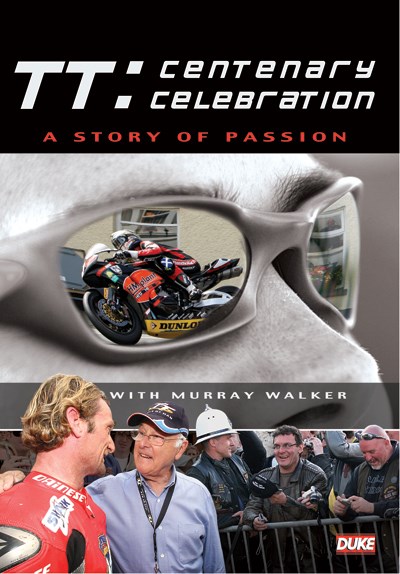
This remarkable film was commissioned by Duke from Greenlight Television to capture the magic of the 100th anniversary of the Isle of Man TT.
Directed by Andrew Stickland, the man behind the critically-acclaimed TT: A Film Documentary, this programme gets under the skin of the event and celebrations, letting the fans, the marshals, the organisers, the locals and more have their say, looking at the impact of the TT on the Island, capturing the off-track attractions and discovering what it means to race.
It is an in-depth study of the importance of the event, examining what draws thousands of people from around the world, as well as a fascinating look at what it means to be a biker.
The extraordinary TT: Centenary Celebration is packed with thoughtful contributions from the stars – including Carl Fogarty, John Surtees, Geoff Duke, John McGuinness and Guy Martin – and your guide throughout is the irrepressible Murray Walker, the legendary motorsport commentator and lifelong TT fan.
“You must see the latest Duke DVD TT Centenary Celebration with Murray Walker doing his stuff and doing it well on a subject he himself loves almost as much as I do.
A very good quality DVD and it shows the whole aspect of the TT through the eyes of riders, fans and many others.
Recommended for those winter evenings!!”
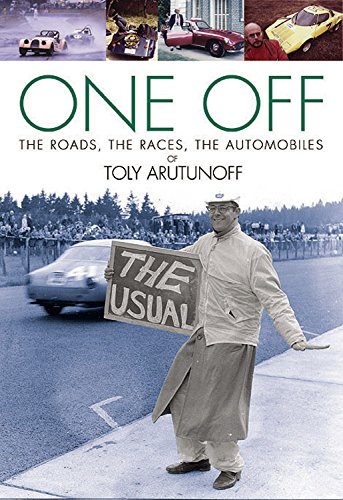
Amateur road racer, raconteur and car guy extraordinaire, Anatoly Arutunoff tells a lifetime of his favorite true first person stories. From his youth in Bartlesville, Oklahoma, to participation at the real Targa Florio, to eventually winning the SCCA runoffs in his Morgan 4/4, to more recent times on the historic rally circuit Toly makes you think you were there sharing all the adventures and camaraderie. There are intriguing family moments, the exuberance of youth and brushes with greats such as Redman, Clark and Moss plus many lesser known players from the past sixty years who collectively molded the sports car culture that has always surrounded the author. Written in an uncomplicated and light-hearted style the reader will either renew a relationship or discover a new friend in a man who suggests, “All the car stuff I’ve done is a sort of cross-section of what you would have done, if you’d been young in the sixties and had the money.” Ride with Toly on the roads and racetracks in America and Europe and share in an experience that is truly “One Off!”
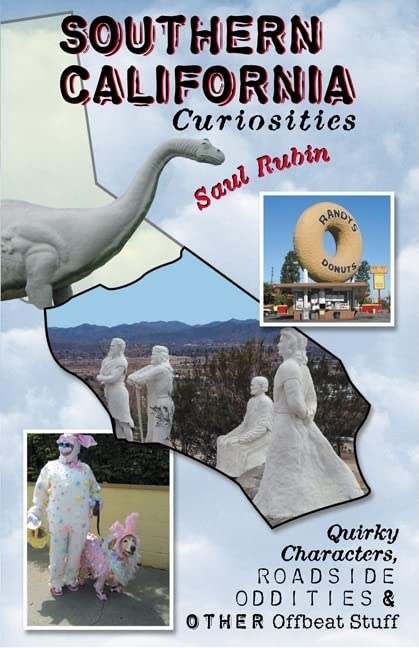
Welcome to Southern California, where residents take their pooches out for ice cream at the Hydrant Café, attend an annual Blessing of the Cars, and then climb aboard a hearse for a Grave Line Tour to find out how, when, where, and sometimes why Hollywood’s finest died. If you’re a sports fan, visit the Baseball Reliquary, home to a partially smoked cigar of Babe Ruth, a fragment of skin from the inner left thigh of baseball pioneer Abner Doubleday, and the gold-plated shovel used by Angels owner Gene Autry during groundbreaking ceremonies at Anaheim Stadium in 1964. And don’t forget the world’s largest champagne glass, still bubbling away at the Lawrence Welk Museum. With this book in hand, readers will be sure to laugh as they learn what lies way off the beaten path in this part of the Golden State.
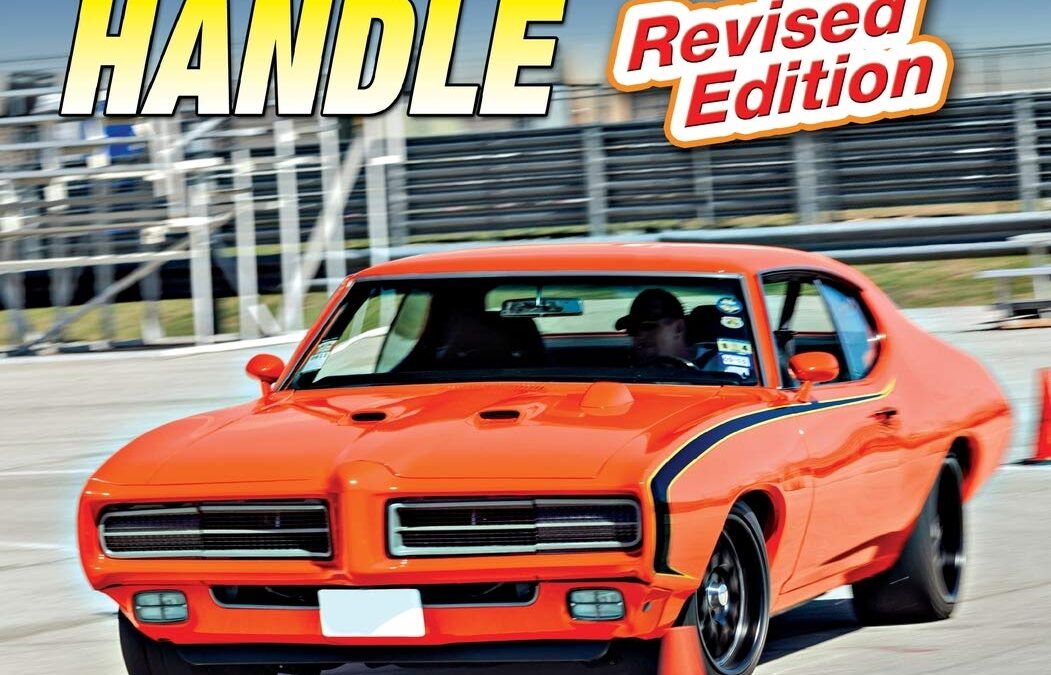
When automotive manufacturers stuffed large V-8 engines into intermediate-size cars, the American muscle car was born. Built from 1964 on, the vast majority of these amazingly fast machines did not carry cutting-edge chassis and suspension systems, and now these cars are up to 50 years old. Today, owners do not have to settle for poor handling and ride quality.
Muscle car and suspension expert Mark Savitske has built his business, Savitske Classic and Custom, on making muscle cars handle and ride at their best. With this updated edition, Savitske shows you what it takes to transform the handling of these high-horsepower machines. He explains the front and rear suspension geometry so you understand how it functions, and in turn, you realize how to get the most from a particular system. He also reveals the important aspects of spring rates, shock dampening, and ride height so you select the best spring and shock package for your car and application. He discusses popular high-performance tubular suspension arms and sway bars, so you can find the right combination of performance and adjustability. The suspension system has to operate as an integrated part of the car, so you’re shown how to select best suspension package for a well-balanced and responsive car. He also discusses how to extract maximum performance from popular GM, Ford, and Mopar muscle cars.
You can harness the performance potential of your muscle car and put much more power to the ground with critical chassis and suspension updates and products. A muscle car that carries modern suspension technology not only provides far better handling and ride comfort, but it is also much safer. How to Make Your Muscle Car Handle is the essential guide to unlocking the handling and performance potential of your muscle car. If you yearn for better handling, comfort, and performance for your muscle car, this is the book for you.
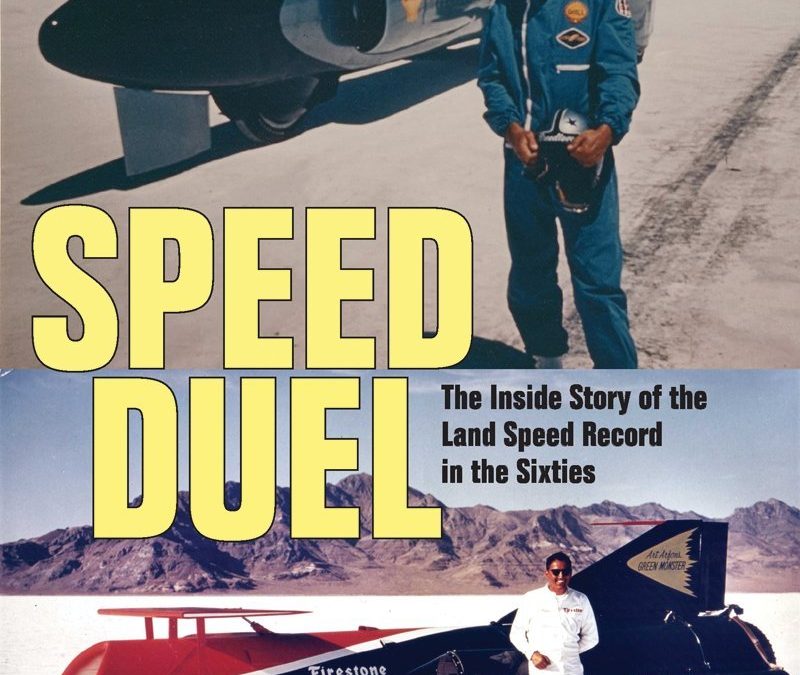
The quest for the land speed record in the 1960s and the epic rivalry between two dynamic American drivers, Art Arfons and Craig Breedlove.
“Interesting and complex. . . .The best job I’ve seen done on the subject so far.”
— Craig Breedlove
Until the 1950s, the land speed record (LSR) was held by a series of European gentlemen racers such as British driver John Cobb, who hit 394 miles per hour in 1947. That record held for more than a decade, until the car culture swept the U.S.
Hot-rodders and drag racers built and souped up racers using car engines, piston aircraft engines and, eventually, jet engines. For this determined and dedicated group, the LSR was no longer an honor to be held by rich aristocrats with industrial backing — it was brought stateside.
In the summer of 1960, the contest moved into overdrive, with eight men contending for the record on Utah’s Bonneville Salt Flats. Some men died in horrific crashes, others prudently retired, and by mid-decade only two men were left driving: Art Arfons and Craig Breedlove. By 1965, Arfons and Breedlove had walked away from some of the most spectacular wipeouts in motor sport history and pushed the record up to 400, then 500, then 600 miles per hour. Speed Duel is the fast-paced history of their rivalry.
Despite the abundant heart-stopping action, Speed Duel is foremost a human drama. Says author Samuel Hawley, “It is a quintessential American tale in the tradition of The Right Stuff, except that it is not about extraordinary men doing great things in a huge government program. It’s about ordinary men doing extraordinary things in their back yards.”
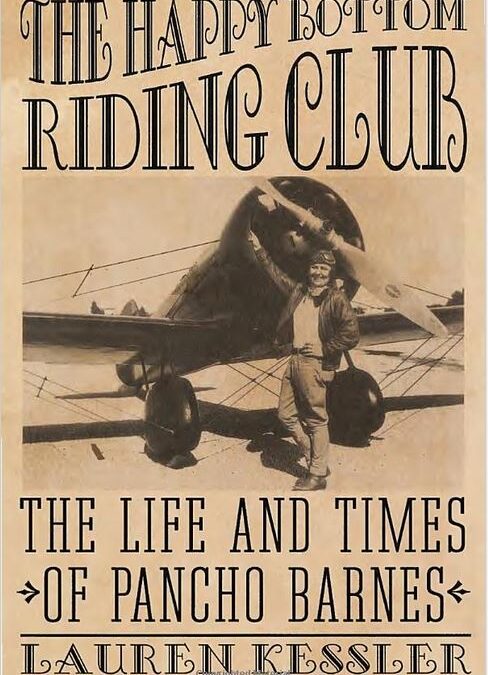
Pancho Barnes was a force of nature, a woman who lived a big, messy, colorful, unconventional life. She ran through three fortunes, four husbands, and countless lovers. She outflew Amelia Earhart, outsmarted Howard Hughes, outdrank the Mexican Army, and out- maneuvered the U.S. government. In The Happy Bottom Riding Club, award-winning author Lauren Kessler tells the story of a high-spirited, headstrong woman who was proud of her successes, unabashed by her failures, and the architect of her own legend.
Florence “Pancho” Barnes was a California heiress who inherited a love of flying from her grandfather, a pioneer balloonist in the Civil War. Faced with a future of domesticity and upper-crust pretensions, she ran away from her responsibilities as wife and mother to create her own life. She cruised South America. She trekked through Mexico astride a burro. She hitchhiked halfway across the United States. Then, in the late 1920s, she took to the skies, one of a handful of female pilots.
She was a barnstormer, a racer, a cross-country flier, and a Hollywood stunt pilot. She was, for a time, “the fastest woman on earth,” flying the fastest civilian airplane in the world. She was an intimate of movie stars, a script doctor for the great director Erich von Stroheim, and, later in life, a drinking buddy of the supersonic jet jockey Chuck Yeager. She ran a wild and wildly successful desert watering hole known as the Happy Bottom Riding Club, the raucous bar and grill depicted in The Right Stuff.
In The Happy Bottom Riding Club, Lauren Kessler presents a portrait, both authoritative and affectionate, of a woman who didn’t play by women’s rules, a woman of large appetites–emotional, financial, and sexual–who called herself “the greatest conversation piece that ever existed.”
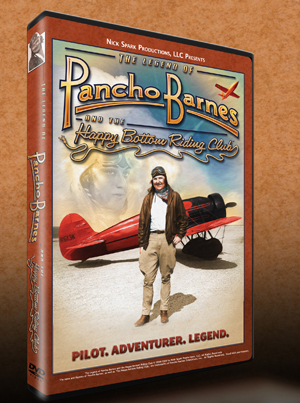
The Legend of Pancho Barnes and the Happy Bottom Riding Club is a documentary profile of one of the most colorful and accomplished female pilots of the early 20th Century. Florence ”Pancho” Barnes became the first female stunt pilot in Hollywood in 1929 and shattered Amelia Earhart’s air speed record in 1930. In the 1940’s and 50’s, Pancho entertained the best test pilots in the world men with the right stuff at her ”Happy Bottom Riding Club” guest ranch near Edwards Air Force Base. When Chuck Yeager broke the sound barrier in the rocket-powered Bell X-1 in 1947, he and his team partied with Pancho. A friend of the fast and the famous, Pancho Barnes was a swaggering, forceful woman whose exploits and accomplishments are truly the stuff of legend.
Featuring never-before-seen photographs and film footage and interviews with many of Pancho’s friends including astronaut Buzz Aldrin and famed test pilots Bob Cardenas, Bob Hoover and Chuck Yeager The Legend of Pancho Barnes is an unforgettable, exciting, and poignant romp through aviation history. Narrated by Tom Skerritt, with Kathy Bates as the voice of Pancho Barnes.

Since the early 1960s, dealer-sponsored Super Stockers battled for supremacy in the quarter-mile. Evolving into the Factory Experimental class, these wild steel bodied, altered-wheelbase monsters were stuffed with massive fuel injected and supercharged engines that attracted crowds to the dragstrip!
Legendary pioneers ”Dyno” Don Nicholson, Jack Chrisman, Butch Leal, Dick Landy, Arnie Beswick, Phil Bonner, Gas Ronda, Don Gay, Sox & Martin, Richard Petty, and many other A/FX stars were instrumental in the development of the funny car as it morphed from a heavy production car into seven-second 250mph aerodynamic fiberglass, tubular chassis missile, becoming the most popular class in drag racing.
Relive these moments in 450 action packed photos.
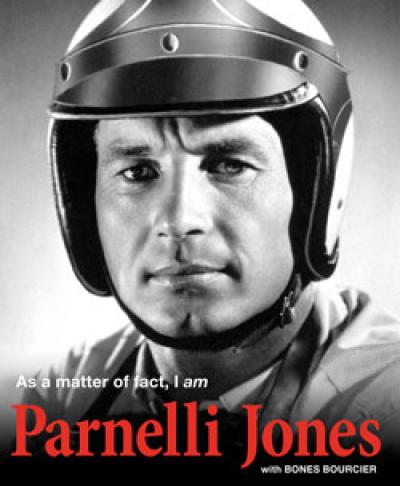
SIGNED
For race fans who know the sport’s history, “Parnelli Jones” is synonymous with speed. Jones’ journey from California jalopy wars to victory lane at the Indianapolis 500 is the stuff of American motorsports legend. Now, at last, Parnelli tells the story of his incredible racing life. Each chapter is introduced by Bourcier to set the scene and ends with a personal reminiscence by a racer, owner, or friend who was there, including A.J. Foyt, Mario Andretti, Bobby and Al Unser, Bud Moore, Johnny Rutherford, Tony Stewart, and more.
Hard cover, 288 pp, B&W and color photos.
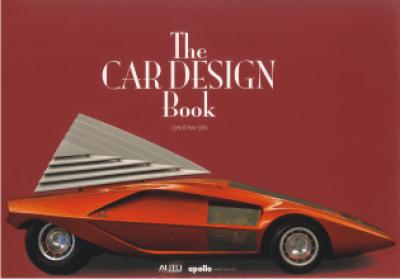
“For most of the last century, the symbiotic relation that car design has had with modern society goes beyond being a barometer of human conditions: it has been a catalyst for economic change and a reflection of ‘human’ industrial history. This book is all about that: the history of car design and how it has changed over the decades; coachbuilders, who as scalpel wielders, have shaped the design evolution of the automobile; the star designers who have played a very significant role in influencing the world of design, both automotive and otherwise, and finally, the cars themselves: the bold, the beautiful, the intriguing. Plus, the stuff made of dreams: the dream cars and concept cars that are a fascinating window to the future, a periscope to a life beyond the here and now. 136 pages with almost 400 photos!
”
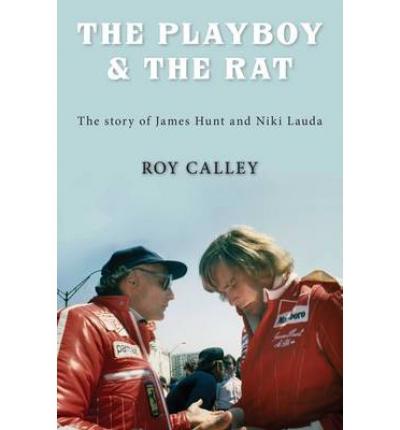
James Hunt and Niki Lauda defined an era in Formula 1 in the 70s. Their battle for the 1976 World Championship is still regarded as one of the most exciting and dramatic in the sport’s history. This is the story of that season and much more. With Lauda’s return from life-threatening injuries the stuff of legend and Hunt’s last gasp title success bringing a whole new generation of followers previously immune to the sport, the Playboy and the Rat brings that story to life once more. After that remarkable season, their careers, and their lives, went in almost polar opposite directions, with Lauda becoming the respected elder statesman of the sport. Hunt died at an unseemly age after a life that typified the image of a racing driver.

Weather, darkness and twists of fate have contributed to more than three hundred airplane crashes in San Bernardino County, California. Many of these accidents occurred in the vast Mojave Desert, others on the cloud-shrouded, snow-capped mountains of the largest county in the lower forty-eight states. Searches often were labored yet fruitless, even for the privileged: Frank Sinatra’s mother perished here in a downed plane. The quest for an aircraft containing $5,000 in cash has become the stuff of legend. Tales of survival in uninhabited, rugged landscapes have been especially harrowing. Join renowned aircraft-crash search specialist G. Pat Macha for dozens of sorrowful, triumphant, touching and surprising true stories of those who lived through the ordeals of plane crashes–and others who didn’t.
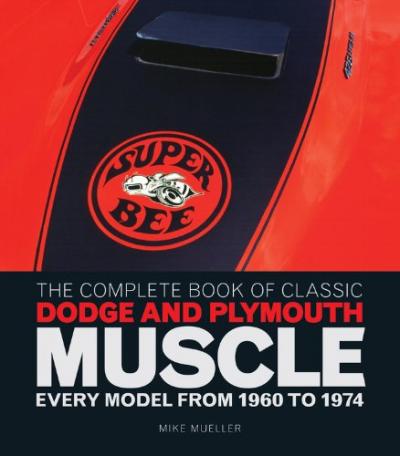
“From lifelong car enthusiast and photographer Mike Mueller comes the most expansive overview of Chrysler Corporation’s muscle cars ever published.
It’s no secret that Dodge and Plymouth have been responsible for some of history’s most iconic muscle cars— a resume including the immortal Road Runner, Dodge Daytona, Hemi ’Cuda, Challenger T/A, Charger, Super Bee, Super Bird, and GTX. These cars, often referred to as “Mopars” (short for “Motor Parts,” Chrysler’s parts division), defined the golden age of the American muscle car. They earned the “Motor” part of the Mopar name by housing the most robust engines of the period: legendary power plants like the original Firepower Hemi, the Max Wedge, the 440 Super Commando, and the famed Street Hemi. Even their small V8s, like the 340 LA-series engine that powered the AAR ’Cuda, are the stuff of motorhead folklore.
In The Complete Book of Classic Dodge and Plymouth Muscle, they’re all here: every car and every engine from the classic era. This gorgeously illustrated work takes readers through the fifty-plus-year history of Mopar performance, from the Hemi-powered 300 Series through the last cars produced before rising gas prices, tightened emissions, and outrageous insurance rates brought the curtain down on American muscle car production. Author/photographer Mike Mueller offers an in-depth look at the specialty driving machines that have made Mopar performance an enduring part of American automotive culture for over half a century. With extensive details, specs, and spectacular photographs, Mueller’s book stands alone as the ultimate resource on America’s muscle cars.”






















